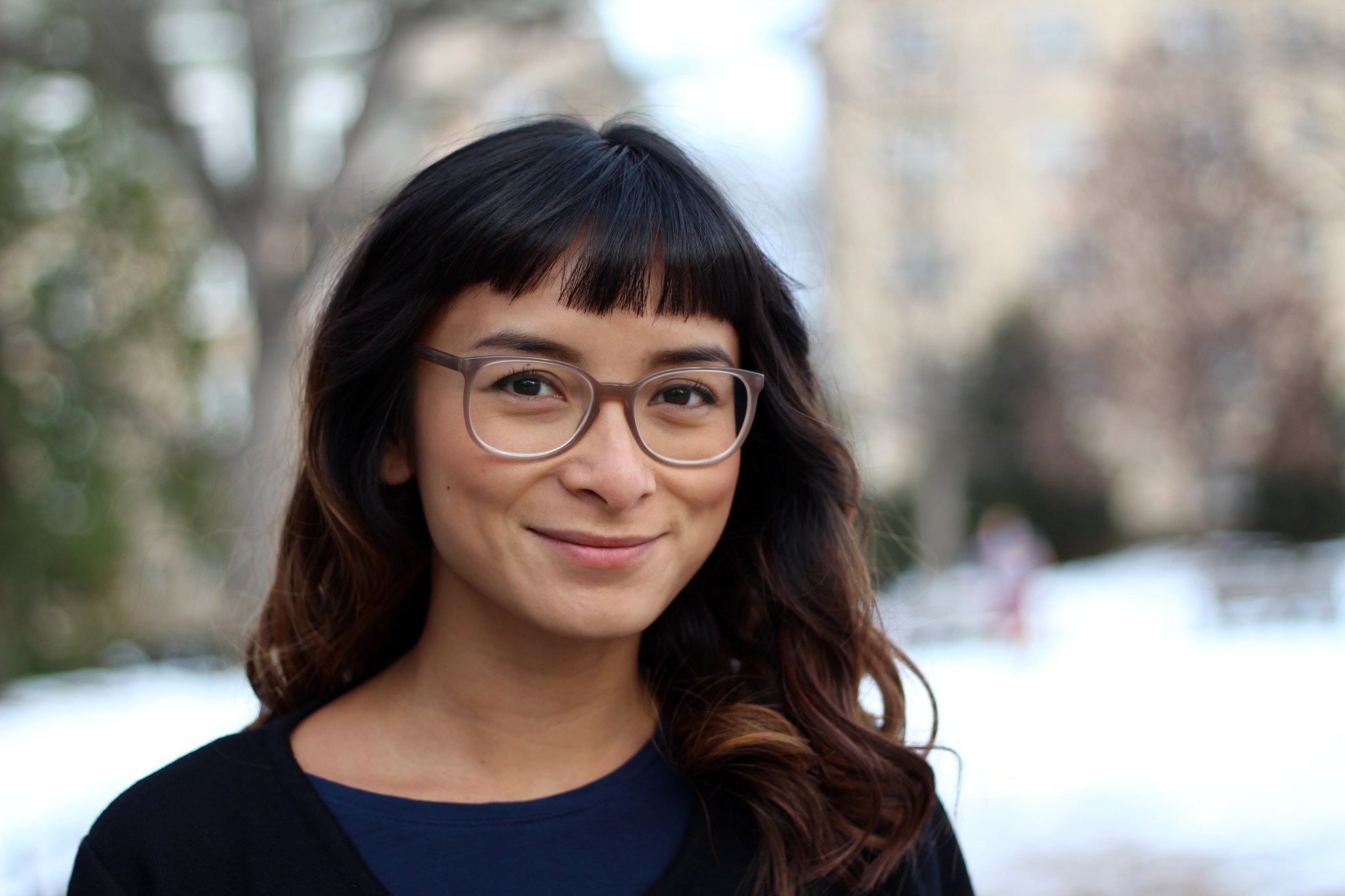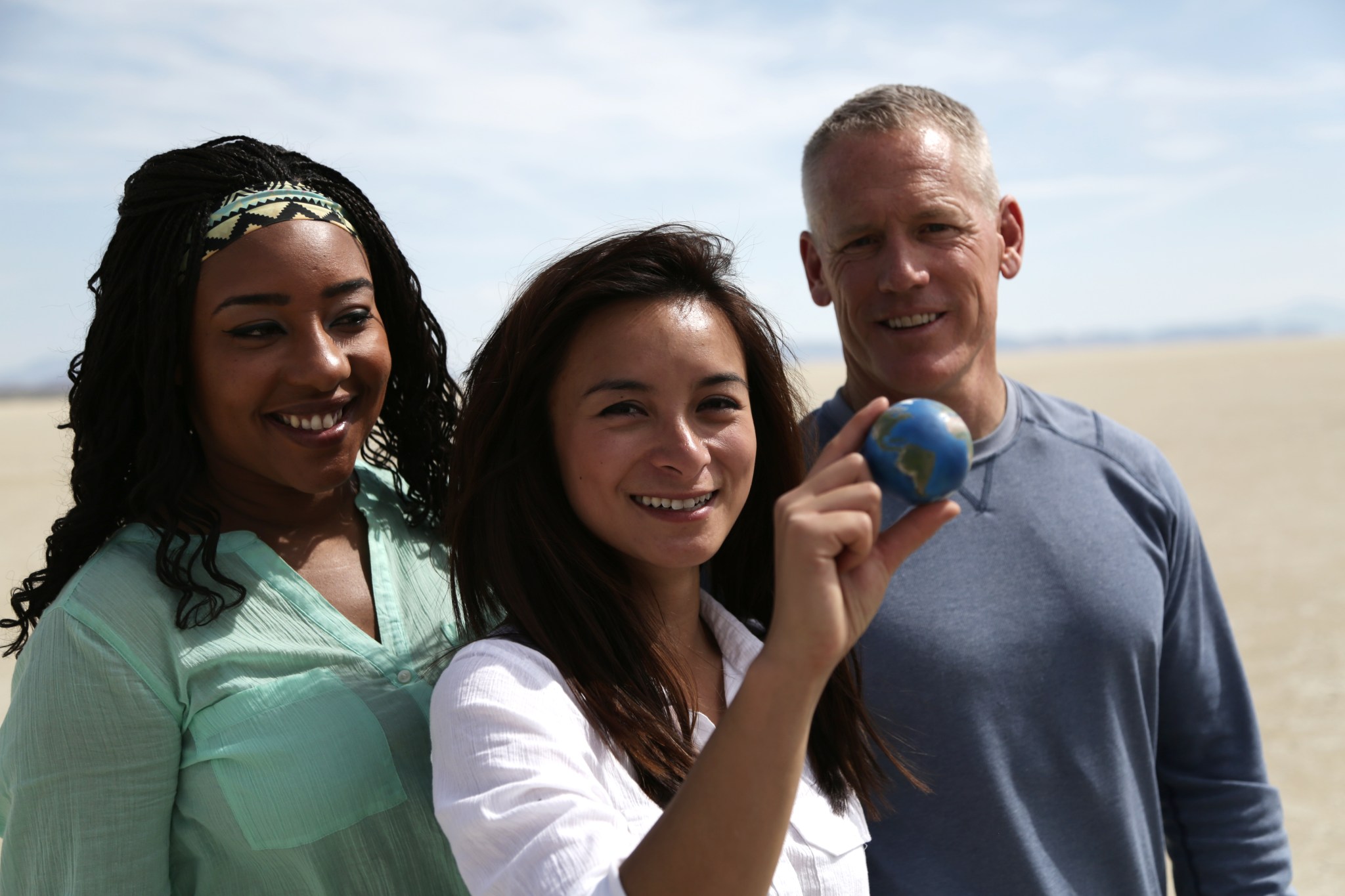Name: Joy Ng
Title: Multimedia and Social Media Fellow
Organization: Code 130, Office of Communications, Office of the Director
Joy Ng translates Goddard science into videos that reach thousands of people, sharing NASA’s work with the world.
What do you do at Goddard? How do you help support Goddard’s mission?
I transform science research into videos understandable to non-experts. These videos appear on NASA.gov, YouTube and other social media platforms. I primarily focus on covering NASA’s research within Earth science, which includes things like volcanoes, oceans, the atmosphere and climate.
Day to day I interview scientists, read science studies, write scripts, shoot, edit and animate to create videos. I also work closely with the Scientific Visualization Studio (SVS) to create visualizations from satellite data and the CiLab to create conceptual animations.
What is your educational background?
I earned an undergraduate degree in biology at the University of Nottingham in England and a master’s degree in science media production at Imperial College London.
Why did you become a science storyteller?
When I was younger, my teachers didn’t know where I was headed. I was very artistic. I was also good in science and at one point thought I might become a scientist. During university, I realized that most scientists are very specialized and found that I was drawn to learning about everything. As well as choosing biology courses from human genetics to plant pathology, I also chose courses in Spanish and psychology. My love of learning and exploring science in a broader sense, led me to work in museums, radio stations and television. One of my first positions was with the BBC Science Unit in London, where I helped set up shoots, research topics and interview potential contributors. I then worked with other British TV production companies before starting my master’s at Imperial.
I love getting people excited about the big and small quirks of science and have found telling stories is the best way to connect with people whether through writing, exhibitions, radio or video.
By science storytelling, I don’t mean fictional storytelling. I mean placing science research in context with, for example, what we know, what we don’t know and why it matters. It’s structuring the complexities of science in a clear and coherent way.
Why did you come to Goddard?
I wanted to come to Goddard for many reasons. I wanted to gain experience doing science communication in a different country. I also wanted to meet scientists from all over the world. Goddard has a huge role in studying the Earth, sun, solar system and universe and is very international. I was really excited about being in the middle of all the amazing work that goes on here. I still jump around with excitement when I chat to a scientist about a new finding or an animator about coming up with a new visualization.
What is your favorite medium?
I have had an affinity toward video because I feel that in video anything is possible. I want to keep finding different ways to interact with audiences and continue reporting on our dynamic world of science. I don’t know what’s next for me, but with the rise of virtual reality I’ve been thinking about how I could transport a viewer to a 360-degree perspective of a satellite in space that is detecting, for example, microscopic marine plants changing ocean color.
What do you think about when making videos?
I always have the audience in mind when creating videos. I never make assumptions about what people know. I ask myself, “What will they find interesting? What can I link this to that is relevant to them? How can I keep them watching until the end of the video?” Sometimes I break down misconceptions to draw people into the video.
What is an example of breaking down misconceptions?
I produced a video called “Why Do Raindrop Sizes Matter in Storms?” I started by explaining what the chance of rain means, which is commonly misunderstood. I thought this would be a good way to lead to how the Global Precipitation Measurement (GPM) mission measures the size and distribution of raindrops and snow particles and how this could impact weather predictions.
What other interesting platforms have you used at NASA?
One of the most interesting platforms I’ve used at NASA is Science On a Sphere, which is a huge spherical screen developed by NOAA. The video is projected from four projectors onto a spherical screen.
I produced a video called “A Global Tour of Precipitation” for Science On a Sphere. It was the first video I have created for spherical screen instead of a flat screen. This kind of platform requires you to think about telling a story in a 3-D space where audiences can walk around and view every part of the sphere. When I was making this video, I replayed the video countless times while sitting in different places in the room so I could see what viewers would see from different perspectives.
Here is an abridged 2-D version that was created for YouTube.
How did you get involved with Stephen Hawking’s upcoming television documentary series, “Genius by Stephen Hawking?”
Someone forwarded me an email looking for participants and I contacted the casting producer for the London-based TV production company called Bigger Bang Productions. The casting producer interviewed me over the phone. She said that she was looking for people who were curious about the world and asked good questions.
A few weeks later, the casting producer invited me to be one of three participants for one of the six episodes. She described the series as an opportunity to do huge science experiments, so I was really excited. She had strict rules not to tell the participants what they would be doing on the shoot as the production team wanted to capture our genuine reactions on camera. We were filmed for roughly five days in Nevada.
The concept behind the show is that Stephen Hawking believes that anyone can think like a genius. Each episode has three ordinary people who attempt to answer some of the biggest questions about the universe, questions that were answered by history’s greatest minds. Stephen Hawking’s challenges for us were the sort of things I dreamed of doing as a kid! I haven’t seen the episode yet so I don’t know Stephen Hawking’s reaction to our solutions, but I can’t wait to see the end result.
My episode airs in the U.S. on PBS on June 1. The show premieres internationally on The National Geographic Channel on June 4.
Here is a preview of “Genius by Stephen Hawking.”
What did you learn from working on “Genius?”
Working at NASA, I’m surrounded by research about our galaxy and the thousands of potential Earth-sized planets, so I’m constantly thinking about how small we are in the universe. But working on “Genius” really made realize this in a new way. Since being on the shoot, I look up into the night sky in a completely different way. It has inspired me even more to communicate Earth science. It sounds cliché, but this tiny planet is our home and we should be conscious as a species of how we are living on it.
What do you say to yourself when thinking of new projects?
I always try to learn something new in the process, whether it is a new technical skill or trying to tell a story in a different way. Also, I always try to remind myself not to be afraid of doing or pitching something different. It is very easy to stick with a format that you know does well, but I think there are many ways you can tell a story.
Do you have any storytelling tips?
Write scripts with the visuals at the forefront of your mind. When I first started writing scripts, I fell into the trap of writing for text rather than video but soon learned that showing something was much more impactful that just telling something.
Another tip I have is to do your homework. When I’m covering a new science paper, I make sure to find out what has been said about the topic before and how this finding is significant to the science community. I make sure I understand the scientific concepts, which is important since I am the one breaking it down to the public.
The science community at Goddard is huge. While we know about the bigger science research, there are also so many hidden gems. So it is vital to meet and chat with new people all the time.
What are your tips for connecting with people?
Make the effort to reach out to new people you have met to continue building on that relationship and definitely reach out to people you want to meet. Everyone at Goddard is very friendly, so it makes connecting with people easy.
Also, don’t be afraid to ask questions. I am always in awe about all the extra side projects or experiments scientists are doing that I would not have discovered if I had not spent an extra five minutes asking more questions. Professional life aside, I love getting to know people and about their varied and interesting lives.
What do you enjoy most about working here?
One of the things I love about working here is that everyone is open to collaborating and spreading their knowledge. If someone has a strong skill in something, I’m able to learn from them. It is great that we can learn from each other to develop individually and as a team.
Who are your mentors?
When I first arrived, Kayvon Sharghi, editor of the NASA Visualization App, was my mentor, and he really helped me get to grips with everything from how we coordinate videos at Goddard to how to spot a good story. Wade Sisler, executive producer, is also a great mentor. He built our team from scratch and has great insight into the bigger picture surrounding potential ideas. I have definitely learned a lot from every person on our team.
What do you do for fun?
From high school through university, I was in a contemporary dance company that performed around the United Kingdom. I also like to paint and draw. I try to give paintings as gifts to friends and family.
I recently passed my motorcycle riding test. I’m excited about exploring the world on two wheels and learning how to fix and repair bikes.
I have lived by the coast my whole life and this is where my love of outdoor life has developed. I’ll take any chance to camp, hike, explore and take photos, or be in water whether that is in a lake, ocean or stream.
What is your “six-word memoir?” A six-word memoir describes something in just six words.
Everything’s impossible until somebody does it.
By Elizabeth M. Jarrell
NASA’s Goddard Space Flight Center, Greenbelt, Md.

Conversations With Goddard is a collection of Q&A profiles highlighting the breadth and depth of NASA’s Goddard Space Flight Center’s talented and diverse workforce. The Conversations have been published twice a month on average since May 2011. Read past editions on Goddard’s “Our People” webpage.




























